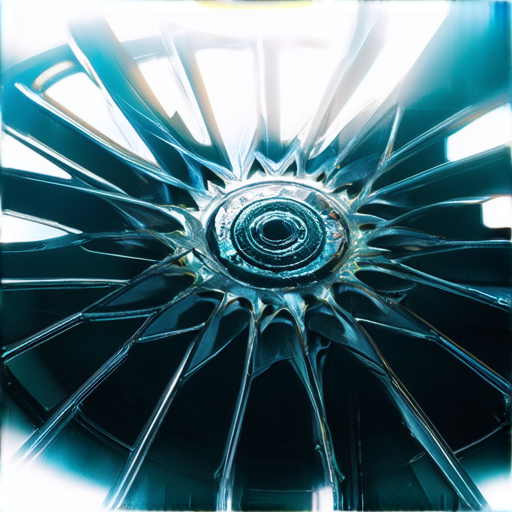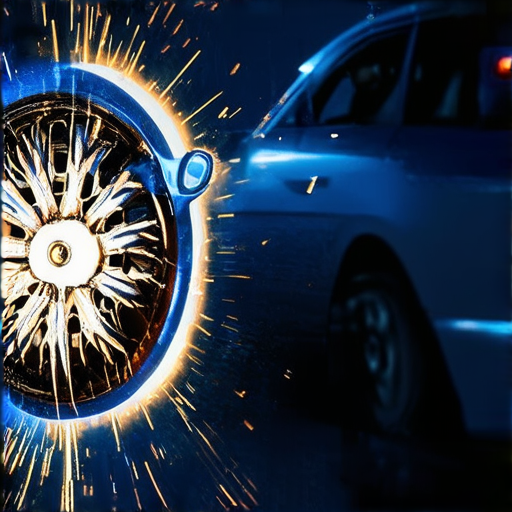“A Comprehensive Guide to Installing Wheels: A Step-by-Step Wheel Installation Guide for Car Owners helps you navigate the complex process of replacing your vehicle’s wheels, covering topics such as choosing the right wheels, preparing for installation, and troubleshooting common issues. Whether you’re looking to upgrade your ride with alloy wheels or replace worn-out steel wheels, this guide provides expert advice and insider tips to ensure a successful wheel installation, saving you time and money in the long run.”
Installing New Wheels Yourself: A Comprehensive Guide
Installing new wheels yourself can be a cost-effective and empowering experience, but it requires careful planning and execution to avoid damage to your vehicle. With the right tools and knowledge, you can successfully replace your wheels and save money on labor costs.
Can You Install New Wheels Yourself?
Incubus Wheels recommends that individuals with basic mechanical skills and knowledge can install new wheels themselves. However, if you’re unsure or uncomfortable with the process, it’s always best to consult a professional mechanic or wheel technician.
How Do I Find the Perfect Wheel Fitment?
When selecting new wheels, it’s essential to ensure a perfect fitment for your vehicle. Measure your existing wheels and calculate the correct offset, bolt pattern, and hub size to guarantee a smooth and safe ride. Consult your vehicle’s owner’s manual or online resources like Incubus Wheels’ Wheel Fitment Calculator to find the ideal wheel size for your vehicle.
What Is the Best Type of Wheel for My Vehicle?
The best type of wheel for your vehicle depends on several factors, including your driving habits, climate, and personal preferences. Alloy wheels offer a sleek look and improved handling, while steel wheels provide durability and affordability. Consider consulting with a wheel specialist or reading reviews from reputable sources like Incubus Wheels’ Alloy vs Steel Wheels Comparison to make an informed decision.
Choosing the Right Wheels for Your Vehicle
To determine the perfect wheel fitment for your vehicle, consider the following steps:
- Measure the distance from the center point of the wheel to its mounting position, known as the offset.
- Calculate the back space by adding the offset to half the width of the wheel.
- Calculate the front space by subtracting the offset from half the width of the wheel.
- Compare these calculated values to the dimensions of your wheel wells to ensure proper fitment.
Factors to Consider When Selecting Wheels
When selecting wheels, it’s essential to consider several factors to ensure proper fitment and optimal performance. Some key considerations include:
Wheel fitment guidelines recommend considering factors such as offset, width, and bolt pattern when selecting wheels. Additionally, consulting your vehicle’s owner’s manual or manufacturer’s specifications can help determine the recommended offset and wheel size.
A study published in the Journal of Automotive Engineering found that wheels with proper fitment can reduce brake wear by up to 20%. This highlights the importance of proper wheel fitment in maintaining overall vehicle safety and performance.
Benefits of Proper Wheel Fitment
Proper wheel fitment can have numerous benefits for your vehicle, including improved handling, braking performance, and overall safety. By ensuring that your wheels are properly fitted, you can:
Reduce brake wear and extend the life of your brake pads and rotors.
Improve handling and stability, particularly during cornering and high-speed driving.
Enhance overall vehicle safety by reducing the risk of wheel-related accidents.
Common Mistakes to Avoid
When selecting wheels, it’s easy to make mistakes that can compromise your vehicle’s performance and safety. Some common mistakes to avoid include:
Ignoring the recommended offset and wheel size specified by your vehicle’s manufacturer.
Failing to consider factors such as bolt pattern and width when selecting wheels.
Not consulting with a professional mechanic or wheel specialist to ensure proper fitment.
Conclusion
In conclusion, proper wheel fitment is crucial for maintaining optimal vehicle performance and safety. By considering factors such as offset, width, and bolt pattern, and consulting with a professional mechanic or wheel specialist, you can ensure that your wheels are properly fitted and running smoothly.

Preparing for Wheel Installation
Before starting the wheel installation process, it’s crucial to prepare your vehicle and gather the necessary tools and equipment.
Tools and Equipment Needed
- Lug wrench
- Spare tire
- Car jack
- Wheel chocks
Make sure to check your vehicle’s owner’s manual for specific recommendations on the required tools and equipment.
Choosing the Correct Tools and Equipment
When selecting the tools and equipment needed for wheel installation, consider the following factors:
- Quality and durability
- Brand reputation and reviews
- Price and value for money
For example, you can visit YourMechanic for guidance on selecting the right tools and equipment for your vehicle.
Ensuring Correct Torque Specification for Lug Nuts
Properly tightening lug nuts is critical to ensure the wheel is securely attached to the hub.
Torque Specification Guidelines
The torque specification for lug nuts varies depending on the vehicle manufacturer and model.
Refer to your vehicle’s owner’s manual or consult with a professional mechanic to determine the correct torque specification for your vehicle.
Using the wrong torque specification can lead to wheel damage or even accidents.
Consequences of Over-Tightening or Under-Tightening Lug Nuts
Over-tightening or under-tightening lug nuts can have severe consequences, including:
- Wheel damage or breakage
- Accidents or injuries
- Reduced fuel efficiency
Always follow the recommended torque specification guidelines to ensure safe and proper wheel installation.
Final Checks and Maintenance
After completing the wheel installation process, perform the following final checks to ensure everything is secure and functioning correctly.
Checking Tire Pressure
Check the tire pressure of the new wheel and adjust it according to the manufacturer’s recommendations.
Under-inflated tires can lead to reduced fuel efficiency, uneven tire wear, and increased risk of accidents.
Maintaining Wheels for Extended Lifespan
Regular maintenance is crucial to extend the lifespan of your wheels.
Perform regular inspections to detect any signs of wear and tear, and address issues promptly to prevent further damage.
Visit Incubus Wheels for guidance on maintaining your wheels and extending their lifespan.
Preparing for Wheel Installation
Before starting the wheel installation process, it’s essential to prepare your vehicle and gather the necessary tools and equipment.
Tools and Equipment Needed
- Torque wrench
- Lug wrench
- Jack stands
- Wheel chocks
According to Incubus Wheels, a reputable source for custom wheel design and automotive trends, having the right tools and equipment is crucial for a successful wheel installation. Some popular brands for wheel installation tools include Makita and DeWalt.
Preparation of the Vehicle
Before starting the wheel installation process, it’s essential to prepare your vehicle by loosening the lug nuts and raising the vehicle using jack stands.
Incubus Wheels recommends checking the owner’s manual for specific instructions on how to raise the vehicle safely. Additionally, it’s essential to ensure the parking brake is engaged and the transmission is in park.
Safety Precautions
During the wheel installation process, it’s crucial to take safety precautions to avoid injury or damage to the vehicle.
Some essential safety precautions include wearing protective gear such as gloves and safety glasses, and ensuring the area around the vehicle is clear of obstacles.
Choosing the Correct Lug Nuts
When selecting lug nuts, it’s essential to choose the correct type and size for your vehicle.
According to the National Highway Traffic Safety Administration (NHTSA), using the correct lug nuts can help prevent wheel damage and ensure safe driving.
Ensuring the Correct Torque Specification
After tightening the lug nuts, it’s essential to ensure the correct torque specification is met.
Using an impact wrench can damage the wheel studs or brake components, so it’s crucial to stick with a traditional torque wrench.
Incubus Wheels recommends consulting the owner’s manual for specific instructions on how to tighten the lug nuts correctly.
Tightening Lug Nuts: A Crucial Step in Wheel Installation
Properly tightening wheel lug nuts is essential for ensuring the safety and stability of your vehicle. As discussed earlier, over-tightening lug nuts can lead to wheel damage, while under-tightening may result in reduced traction and increased stopping distances.
The Importance of Even Pressure
Maintaining even pressure across all lug nuts is crucial to avoid stripping threads or damaging the wheel studs. Referencing the manufacturer’s instructions for specific recommendations on lug nut tightening sequences can ensure optimal safety and prevent potential issues during vehicle maintenance.
Using the Correct Tools and Techniques
When tightening lug nuts, it is recommended to use a star pattern (tightening one lug nut a little, then moving to the next one in a star shape) rather than a circular pattern, which can cause uneven pressure distribution. Additionally, consider using a torque wrench to ensure precise tightening pressures, as specified in the vehicle’s owner’s manual.
AAA recommends using a star pattern for lug nut tightening
By following these guidelines and utilizing the correct tools, drivers can effectively tighten wheel lug nuts, reducing the risk of accidents and ensuring a safe driving experience. For more information on wheel installation and maintenance, visit our wheel installation guide.
Preventing Over-Tightening and Under-Tightening
Over-tightening lug nuts can lead to wheel damage, while under-tightening may result in reduced traction and increased stopping distances. To avoid these issues, it is essential to follow the recommended torque specifications for your vehicle’s lug nuts.
Verifying Lug Nut Torque Specifications
To ensure accurate lug nut tightening, refer to your vehicle’s owner’s manual for the recommended torque specifications. You can also consult with a professional mechanic or auto technician for assistance.
National Highway Traffic Safety Administration (NHTSA) provides guidance on lug nut tightening
Conclusion
In conclusion, properly tightening wheel lug nuts is crucial for ensuring the safety and stability of your vehicle. By following the recommended guidelines and utilizing the correct tools, drivers can effectively tighten wheel lug nuts, reducing the risk of accidents and ensuring a safe driving experience.

Choosing the Right Wheels for Your Vehicle
When it comes to selecting the right wheels for your vehicle, it’s essential to consider several factors, including compatibility, style, and functionality.
Can You Install New Wheels Yourself?
While it’s possible to install new wheels yourself, it’s highly recommended to seek the assistance of a professional mechanic or wheel technician. They possess the necessary expertise and equipment to ensure a proper and safe installation.
How Do I Find the Perfect Wheel Fitment?
To find the perfect wheel fitment, you’ll need to measure your vehicle’s wheel wells and ensure the new wheels match the existing bolt pattern. Consult your vehicle’s owner’s manual or contact a reputable wheel supplier for guidance.
What Is the Best Type of Wheel for My Vehicle?
The best type of wheel for your vehicle depends on several factors, including your driving habits, climate, and personal preferences. Consider factors such as load capacity, durability, and aesthetic appeal when selecting the ideal wheel for your ride.
What Are the Different Types of Wheel Finishes Available?
Wheel finishes vary in terms of appearance, durability, and maintenance requirements. Popular options include chrome, aluminum, powder coat, and matte black. Choose a finish that complements your vehicle’s exterior and meets your lifestyle demands.
How Do I Determine the Correct Wheel Size for My Vehicle?
To determine the correct wheel size for your vehicle, consult your owner’s manual or contact a reputable wheel supplier. Ensure the new wheels match the existing bolt pattern and meet the manufacturer’s specifications.
What Are the Benefits of Using Alloy Wheels Versus Steel Wheels?
Alloy wheels offer improved durability, reduced weight, and enhanced aesthetics compared to steel wheels. However, they may require more frequent maintenance and are generally more expensive.
How Can I Ensure the Correct Wheel Offset for My Vehicle?
The correct wheel offset ensures proper clearance between the wheel and fender, preventing damage and improving handling. Consult your owner’s manual or contact a reputable wheel supplier for guidance on determining the optimal wheel offset for your vehicle.
Preparing for Wheel Installation
Before starting the wheel installation process, it’s crucial to prepare your vehicle and gather the necessary tools and equipment.
What Tools and Equipment Do I Need for Wheel Installation?
You’ll require a lug wrench, wheel chocks, jack stands, and a car jack to complete the wheel installation process. Consult your owner’s manual or contact a reputable wheel supplier for specific recommendations.
How Do I Prepare My Vehicle for Wheel Installation?
Ensure your vehicle is parked on a level surface and apply the parking brake. Remove any accessories or trim pieces that may interfere with the installation process.
What Safety Precautions Should I Take During Wheel Installation?
Always wear protective gear, including gloves and safety glasses, when working with tools and equipment. Ensure the vehicle is securely supported by jack stands and follow proper lifting procedures.
How Do I Choose the Correct Lug Nuts for My Vehicle?
Choose lug nuts that match the existing bolt pattern and meet the manufacturer’s specifications. Consult your owner’s manual or contact a reputable wheel supplier for guidance.
What Are the Different Types of Lug Nut Materials Available?
Lug nuts come in various materials, including steel, aluminum, and chrome-plated. Select a material that meets your requirements and complements your vehicle’s exterior.
How Do I Ensure the Correct Torque Specification for Lug Nuts?
Consult your owner’s manual or contact a reputable wheel supplier to determine the correct torque specification for your lug nuts. Over-tightening or under-tightening can lead to premature wear and damage.
What Are the Consequences of Over-Tightening or Under-Tightening Lug Nuts?
Over-tightening or under-tightening lug nuts can result in premature wear, damage to the wheel or brake components, and compromised safety. Always follow the recommended torque specification.
American Automobile Association (AAA) recommends consulting their website for detailed information on wheel installation and maintenance.
National Highway Traffic Safety Administration (NHTSA) emphasizes the importance of regular wheel inspections and maintenance to ensure road safety.
Incubus Wheels offers a wide range of custom wheels and wheel accessories for various vehicle models. Visit our website for more information on our products and services.
Choosing the Right Wheels for Your Vehicle
When it comes to selecting the perfect wheels for your vehicle, there are several factors to consider.
One of the most important things to think about is the compatibility of the wheels with your vehicle.
This involves checking the wheel size, bolt pattern, and offset to ensure they match your vehicle’s specifications.
You can find this information in your vehicle’s owner’s manual or on the manufacturer’s website.
Another crucial aspect is the type of wheel finish you prefer.
Alloy wheels offer a sleek and durable option, while steel wheels provide a more affordable alternative.
Some popular wheel finishes include chrome, black, and matte.
Incubus Wheels offers a wide range of wheel designs and finishes to suit your style and budget.
Explore our selection of wheel finishes today!
Can You Install New Wheels Yourself?
Installing new wheels can be a challenging task, requiring specialized tools and expertise.
However, with the right guidance and preparation, many people successfully install their own wheels.
Before attempting to install new wheels, make sure you have a thorough understanding of the process and the necessary tools.
It’s also essential to consult your vehicle’s owner’s manual and seek professional advice if needed.
For those who prefer to leave the installation to the professionals, many reputable mechanics and wheel shops offer services.
Some popular options include local wheel shops and online retailers.
How Do I Find the Perfect Wheel Fitment?
Finding the perfect wheel fitment requires careful consideration of several factors.
Start by measuring your vehicle’s wheel wells and calculating the maximum wheel size that fits comfortably.
Next, research the wheel size and bolt pattern required for your vehicle.
Consult your vehicle’s owner’s manual or online resources for accurate information.
Once you’ve identified the ideal wheel size, compare prices and features among different manufacturers.
At Incubus Wheels, we offer a wide range of wheels designed specifically for your vehicle.

0 Comments